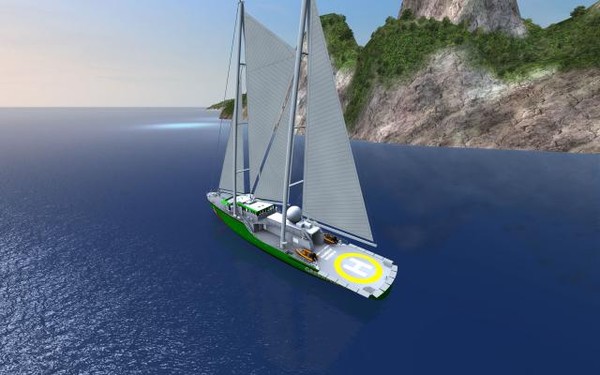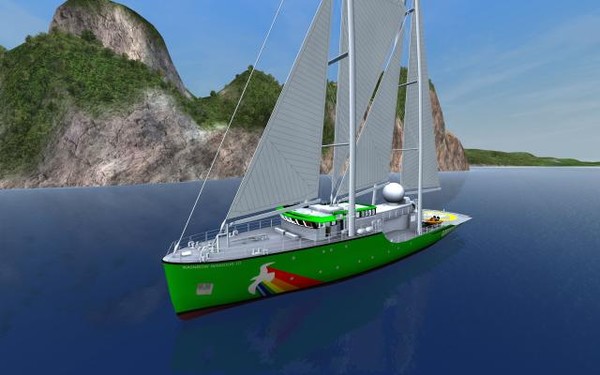Spirit of bombed Rainbow Warrior to live on in new high tech ship


On the eve of the 24th anniversary of the Rainbow Warrior bombing, Greenpeace has announced work is about to start on a purpose-built Rainbow Warrior III, incorporating the latest in green-marine technology.
This is the first time in the environmental organisation's history it has chosen to commission a purpose-built high seas sailing ship instead of refurbishing an older one.
The Rainbow Warrior III, being built in Germany, will be wind powered with a back-up diesel-electric engine which will be used depending on weather conditions. The A-frame design of the mast and the positioning of the sails has been optimised for efficiency and the shape of the hull has been designed for maximum fuel conservation. Heat created by the generators will be re-used to heat water on board and for engine pre-heating.
The new ship is due to be completed in 2011 when Greenpeace will mark its 40th anniversary. It will replace the 52 year-old Rainbow Warrior II, which was purchased by Greenpeace 20 years ago and has been used in environmental campaigns around the world, including New Zealand last year.
Greenpeace New Zealand Executive Director, Bunny McDiarmid, said New Zealanders have a close link to the original Rainbow Warrior which was bombed by French secret service agents, in 1985, as it was preparing for a campaign against French nuclear testing in the Pacific. The two bombs killed one crew member, photographer Fernando Pereira, and destroyed the ship beyond repair.
“The Rainbow Warrior is synonymous with Greenpeace, particularly in this part of the
World, and the spirit of hope that the first Warrior carried and that was passed onto
the second Rainbow Warrior, will no doubt be on board when the new Warrior is launched,” she said.
“Not only does our flagship provide Greenpeace with a platform to challenge environmental abuse across the world, it provides people with inspiration to take action
of their own. We look forward to seeing the new Warrior here in our waters to carry that on.”
Currently the Greenpeace fleet consists of three ships, Rainbow Warrior II (currently in the Mediterranean being used for campaigner training), Arctic Sunrise (currently documenting ice melt in the Arctic) and Esperanza (in the Pacific documenting climate change impacts). The Esperanza is the youngest of the fleet, ideal for fast and long range missions.
Following the bombing in Auckland Harbour Rainbow Warrior I was scuttled and sunk in the clear deep waters of Matauri Bay in New Zealand and is a popular spot for recreational divers.
Greenpeace was formed in 1971 when a group of volunteers on-board an old
fishing vessel called the Phyllis Cormack set out for Amchitka off the coast
of Canada in order to protest nuclear testing on the island. Since then
Greenpeace has used its fleet of ships to bear witness to environmental
crimes like over-fishing and whaling, to block shipments of hazardous
materials like nuclear waste and shipments of illegal drivers of climate
change (including timber, oil, palm oil and coal). The first Rainbow
Warrior was sunk in the port of Auckland by the French Government on July
10, 1985 as she was preparing to protest French nuclear testing in Mururoa.
